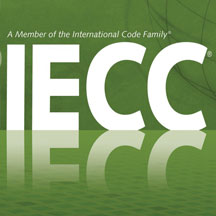
In early 2009, in the wake of the greatest financial crisis since the Great Depression, the President and Congress scrambled to find ways to stabilize and to begin to grow the economy again. Out of this turmoil came the American Reinvestment and Recovery Act (ARRA), a bill designed to preserve and create jobs during a deep recession, and to provide investment in infrastructure, energy, and science. Among its many policy objectives, one provision of the Act committed to a dramatic reduction of energy consumption in residential buildings by 2017. Progress in advancing energy codes has been slow, but still the clock keeps ticking.
Background
Of course we all remember the ARRA days, some more fondly than others. The Act initiated rapid deployment of funding for energy efficiency, renewable energy, and mass transit projects amounting to $97 billion – a shot in the arm for industries that had, for years, struggled to gain traction. The lion’s share, $32 billion, funded energy efficiency and building retrofit projects. Overnight, little known energy efficiency programs swelled in size, and a whole new generation of building scientists (the author included) were trained as energy auditors and retrofit installers. Inside the home performance industry, the merits of this massive investment are still hotly debated. A common argument among contends that with so many billions of dollars flying around, an expectation was set among consumers that home performance services should be steeply discounted or altogether free. But as is true with any market incentive, ARRA funds undoubtedly helped energy efficiency providers secure customers that might otherwise have been out of reach.
View, download, or print this article as a two-page PDF (448 KB).
Implementation of IECC 2009

Nearly seven years later, many energy efficiency efforts that were burgeoning in the golden days of ARRA have since retracted back to pre-Stimulus capacity. Although the massive spending has come to an end, the impacts of ARRA on home performance are not confined to a bygone era. In fact, an often over-looked clause of the bill is garnering serious attention. As a condition of accepting stimulus dollars, governors from each of the 50 states offered assurance that (among other things) their states would adopt the International Energy Conservation Code of 2009 as the minimum energy standard for residential buildings. Carrying that promise a step further, each state agreed to achieve 90% compliance with the code by 2017.
On the surface, this may not seem like much of a commitment, but in reality, 2009 IECC represented a major leap forward for residential new construction. For the first time in the history of residential energy code, performance testing of duct system leakage became mandatory. No longer would a leaky sieve of a duct system be allowed to pass based on the good word of the HVAC subcontractor. Simultaneously, the prescriptive approach to reducing whole house leakage was enhanced to include an optional performance testing pathway. While blower door testing is not mandatory in 2009 IECC, the stage was set for whole house infiltration testing to become mandatory in the 2012 code. Finally, at the behest of the home performance industry and leading homebuilders, a new home would have to meet strict performance thresholds in order to pass code inspection. In a perfect world, the more than 4 million new homes that have been built from 2010 would be using at least 15% less energy than their most efficient predecessors – a lifetime of savings for their owners and the avoidance of significant climate-disrupting emissions.
The Current Status
Unfortunately, the present reality tells a different story. The calendar has rolled over into 2016, and sixteen states do not have a statewide mandate requiring IECC 2009. In some cases, these are “home rule” states that are prevented from issuing statewide energy code, relying instead on municipalities or other local authorities to adopt and enforce energy standards. Regardless of the reason, the result is a patchwork of energy codes across the U.S. and the likelihood of a number of broken promises by stimulus-era governors.
Efforts have been made by the Department of Energy to get a clear picture of residential energy code compliance around the country, and the results have been mixed. Studies completed in 2011 by DOE in partnership efficiency organizations representing nine states did not generate consistent nationwide energy code compliance rates, but laid a strong foundation for future studies and identified many of the common challenges . In 2015, eight states were studied and preliminary results suggest both a more consistent approach to compliance measurement and generally strong performance on measures determined to have the largest impact on energy use .
Despite this progress, it remains unclear whether 90% compliance with IECC 2009 across all 50 states by 2017 is an achievable goal. Furthermore, the consequences of non-compliance are hard to pin down with the billions of stimulus dollars having already been spent. Meanwhile, two more aggressive versions of the IECC code were published in 2012 and 2015, and have been adopted by only 13 states and Washington DC. Still, despite the complexity of the challenge, it is more than just a noble objective. It is one that promises serious benefits for the American homebuyer, for national security and public health, and for achieving a stable future climate.
The Compliance Project
 A coalition of individuals and businesses in the home performance and energy efficiency industries have joined together to launch the Compliance Project, a nationwide initiative to speed the implementation of energy codes in the construction of new homes. The upcoming deadlines, as agreed upon by the states as a condition of receiving ARRA funds, will surely help advance this initiative. If you’d like to learn more about the Compliance Project, and help usher in the era of high-performing homes, visit www.complianceproject.us.
A coalition of individuals and businesses in the home performance and energy efficiency industries have joined together to launch the Compliance Project, a nationwide initiative to speed the implementation of energy codes in the construction of new homes. The upcoming deadlines, as agreed upon by the states as a condition of receiving ARRA funds, will surely help advance this initiative. If you’d like to learn more about the Compliance Project, and help usher in the era of high-performing homes, visit www.complianceproject.us.
Ryan is a free-lance consultant from Albuquerque, New Mexico. He’s recipient of the 2014 Habitat X Fellowship.
View, download, or print this article as a two-page PDF (448 KB).


